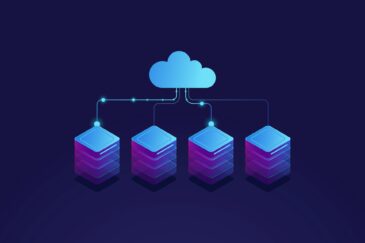Best Practices to Minimize Data Migration Downtime

- November 14, 2023
- Jhansi Rani
- 0
Reasons for Downtime During Data Migration
Data migration from on-premise to the cloud can result in downtime for several reasons, even with careful planning and execution. Some common factors contributing to downtime during this process include:
Data Transfer Speed
The speed at which data can be transferred from on-premise servers to the cloud depends on the available bandwidth. If the organization has limited bandwidth, it can slow down the migration process and potentially lead to downtime, especially if critical operations are affected.
Data Volume and Complexity
Large volumes or complex data structures can extend the migration duration, leading to prolonged downtime. The time it takes to move and reorganize data in the cloud infrastructure can impact the availability of services during the migration period.
Application Dependencies
If applications in the on-premise environment depend on specific data or configurations, the migration process may require them to be temporarily taken offline. This downtime is necessary to ensure data consistency and prevent data corruption during the migration.
Testing and Validation
Organizations typically conduct testing and validation procedures to ensure data integrity and system functionality after migration. Certain services or applications may need to be temporarily offline during these testing phases, contributing to overall downtime.
Managing Cloud Resources
Configuring and optimizing cloud resources to accommodate the migrated data may take time. Scaling and adjusting the cloud infrastructure to handle the workload efficiently can result in temporary service disruptions.
Unforeseen Issues
Despite thorough planning, unforeseen issues and compatibility challenges may arise during data migration. These can include unexpected errors, incompatibilities between on-premise and cloud environments, or problems with third-party integrations, leading to unplanned downtime.
How to Minimize Data Migration Downtime
Minimizing downtime during data migration from on-premise to the cloud requires careful planning, coordination, and the implementation of best practices. Here are some key strategies:
Thorough Planning and Assessment
Before initiating data migration, comprehensively evaluate the existing on-premise infrastructure. Identify dependencies, data volumes, and potential challenges, and develop a detailed migration roadmap that includes timelines, milestones, and contingencies for any unexpected issues. This proactive approach ensures a clear understanding of the scope of the migration and lays the foundation for a successful and well-managed process.
Prioritize and Phase Migration
Prioritize critical systems and data for migration to minimize disruption to essential business operations. Adopt a phased migration strategy where different components or data sets are migrated separately, allowing you to focus on specific elements, reducing the overall impact on system availability, and ensuring that critical functions are prioritized during the transition.
Off-Peak Migration Timing
Schedule the migration during off-peak hours or periods of lower business activity to minimize the impact on end-users. Communicate the planned downtime well in advance to stakeholders and end-users, providing transparency about the timing and duration of the migration. This approach helps manage expectations and allows for a smoother transition with reduced interference in daily operations.
Incremental Data Migration
Opt for an incremental data migration approach where changes are synchronized regularly instead of moving all data simultaneously. This method helps reduce the downtime required for the final cutover, as updates are transferred incrementally. It also facilitates easier validation and testing during migration, ensuring data integrity is maintained throughout the transition from on-premise to the cloud.
Data Preprocessing and Compression
Before migrating data to the cloud, organizations should preprocess and compress data to optimize the transfer process. This involves organizing and cleaning data to eliminate unnecessary elements and applying compression techniques to reduce the overall size. Doing so minimizes the amount of data transferred, leading to faster migration times and decreased downtime.
Parallel Testing and Validation
Conducting thorough testing and validation in a parallel environment involves replicating the on-premise setup in the cloud and validating data integrity, application functionality, and system performance. Parallel testing ensures that any issues are discovered and resolved before they impact the production environment, reducing the risk of downtime during the migration process and enhancing the overall reliability of the transition.
Incremental Rollback Plans
Develop rollback plans that allow for a phased and incremental reversal to the previous state in case of unexpected challenges during migration. This approach minimizes the impact of any issues, as it enables a gradual retreat to the on-premise environment if necessary. You can address unforeseen problems in a controlled manner without the need for a complete and disruptive rollback of the entire migration, helping to maintain operational continuity.
Automated Monitoring and Alerts
Configure automated monitoring tools to provide alerts for potential issues or deviations from the planned migration process. Automated monitoring enhances the ability to respond swiftly to emerging issues, allowing for proactive intervention and minimizing the impact on downtime. This approach ensures that the migration remains on track and any disruptions are addressed promptly to maintain a smooth and efficient transition to the cloud.
Collaboration and Communication
Foster strong collaboration between IT teams, cloud service providers, and relevant stakeholders throughout the data migration process. Establishing open lines of communication ensures that all parties are aligned on the migration plan, potential challenges, and mitigation strategies. Regular communication facilitates quick problem resolution, minimizes misunderstandings, and enhances coordination, ensuring a smooth transition without unnecessary downtime.
Training and Documentation
Ensure that teams involved in the migration are well-trained on the tools and processes essential for a successful transition to the cloud. Providing comprehensive training helps teams understand their roles and responsibilities during migration, reducing the likelihood of errors that could lead to downtime. Additionally, thorough documentation of migration procedures, configurations, and best practices can serve as a reference for troubleshooting common issues and contribute to knowledge transfer within the organization. Your team can handle challenges effectively and maintain high operational readiness during and after the migration.
Oracle Data Migration Tools
ConvertRite is a robust Oracle data migration tool that facilitates the seamless data transition from on-premise to cloud applications. Offering a comprehensive set of features, ConvertRite handles data extraction, transformation, error reporting, reconciliations, and migrations, ensuring that Oracle Cloud data is up-to-date and available in real time. Notable features include Single Sign-On (SSO) capabilities with OAuth, configurable reconciliation based on record count or amount, and a no/low code-based conversion tool designed specifically for Oracle Cloud and deployed using Docker/Kubernetes. Additionally, ConvertRite is ERP-agnostic, making it compatible with various ERP systems.
ConvertRite enables businesses to validate data before migration, saving time and effort by automating extraction, transformation, and validation tasks. The tool also offers pre-built reconciliation and reporting features for efficient post-migration management. With benefits like cost savings of up to 40%, zero coding requirements, pre-built cloud integrations, and automated data conversion, ConvertRite is the ultimate cloud migration tool for legacy systems, especially for businesses moving from Oracle EBS to Oracle Cloud.

Services
Products
Company
Copyright © 2024 Rite Software Solutions & Services LLC. All rights reserved.



